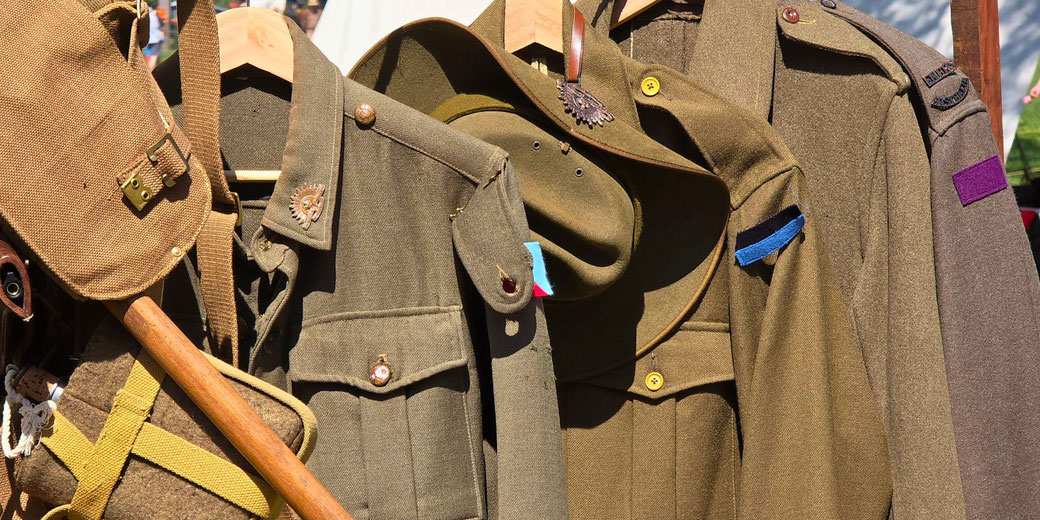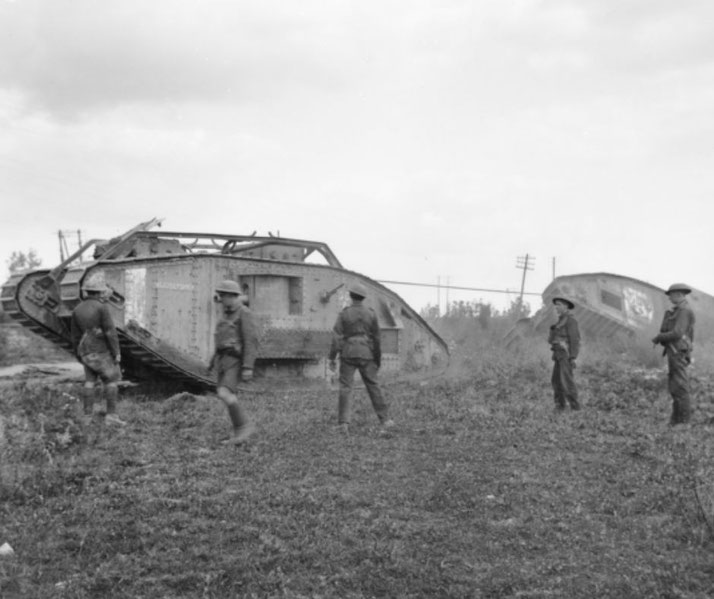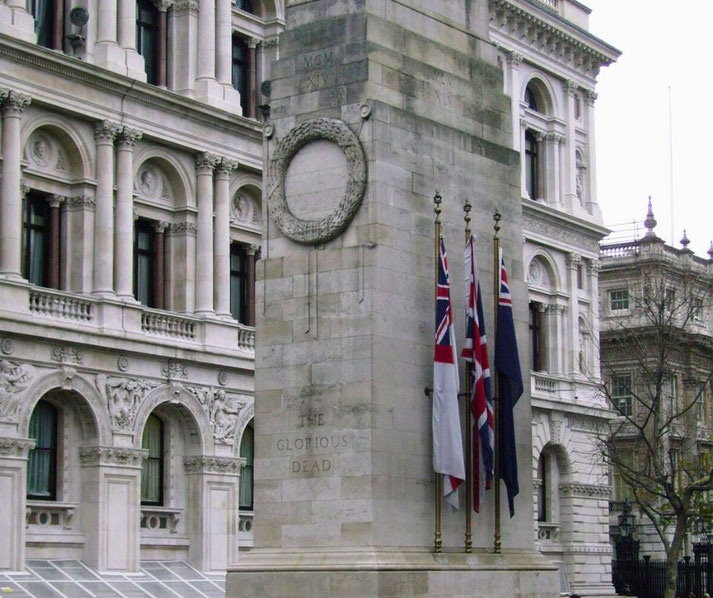How did World War One end?

World War One was one of the deadliest conflicts in history, resulting in an estimated 15-19 million deaths and 23 million wounded.
Before it finally ended in November 1918, both sides threw all of their remaining resources into trying to achieve a final victory.
Ultimately, however, Germany would be defeated. Here are the significant events that finally brought the conflict to an end.
America joins the war
One of the decisive factors was that America had joined the conflict on the side of the Allies.
The United States had formally declared war on Germany in 1917, but it took time for the country to mobilise its forces and sail them to Europe to participate.
However, prior to the official declaration of war, America had still been involved in the war by supplying weapons and resources to the Allies.
So, what changed America's mind from being a supporter to being a participant?
Firstly, on the 7th of May 1915, a British passenger ship called the Lusitania was sunk by a German U-boat.
Of the 1195 passengers that died, 128 were Americans, and the American public were angered by this.
When the Germans announced a restarting of their unrestricted submarine warfare in February 1917, Americans feared that more civilians would lose their lives.
Then, in April 1917, US President Woodrow Wilson delivered the speech declaring war on Germany.
It wouldn't be until the summer months of 1918 that American troops would be in Europe, ready to fight.
Combined arms warfare
Another factor that aided the Allies in their eventual victory was the adoption of a new kind of warfare.
For the first few years of the war, the different elements of the armed forces, army, navy, artillery and air force, had operated separately, under different commanders and rules.
By 1918, a new idea had developed: each of these forces could work as a single unit, following a unified battle plan. This was called 'combined arms warfare'.
Under this approach, new tanks would be used as a moving shield for infantry units, who would shelter behind the machines as they slowly crept forwards.
This would protect the soldiers until they reached the trenches. Artillery would provide a screen of explosive shells that crept forward at the same speed as the tanks, which would destroy any enemy troops before the tanks and soldiers reached them.
Aircraft would act as scouts, relaying information back to the artillery about its speed and potential targets.
The unified approach under the combined arms warfare model proved to be very effective, especially with the influx of new men and materials from America.

Major offensives
Following Russia's departure from the war by the end of 1917, Germany was able to relocate a significant number of soldiers and resources from the Russian front to the western front.
The German commander, Erich Ludendorff, knew that he had to try and win the war with the increased troop numbers before the Americans were ready.
From March to July 1918, he launched the 'Ludendorff Offensive' (also known as Kaiserschlacht , or 'Kaiser's Battle'), which was a massive attack all along the western front in France, with the aim of reaching Paris and forcing the Allies to surrender.
The first few weeks of the German attack were very effective, as the Germans gained more ground than they had since 1914. They almost reached Paris.
However, by July 1918, the Germans were running out of men and resources, and the advance slowed to a halt.
The constant blockades of German port cities by the British navy had resulted in food shortages back home and the German people were growing angry with the failure to win the war.
By this stage, the Americans were now ready to join the Allied attack and push the Germans back.
In August 1918, the Allies began their counterattack, called the 'Hundred Days Offensive'.
Across a broad length of the western front in France, Allied armies using combined arms warfare launched a massive assault against German lines.
The large number of American troops, the use of combined arms warfare, and the depleted German resources meant that the German army began retreating and giving up more land than they had gained.
Allied victory
By October 1918, it was clear that Germany was going to lose World War One.
General Ludendorff resigned from his military role, the German navy stopped following orders, and even the German Kaiser, Wilhelm II, abdicated on November 9th 1918.
On 11th November 1918, the leaders of both sides of the conflict met in a railway carriage and signed Germany's official ceasefire, known as the 'Armistice'.
World War One was finally over.

The Treaty of Versailles
Even though the war ended in November 1918, Europe still had to work out how to fix all of the damage that had been caused over the last five years of war.
Sorting out the consequences of the most brutal war in human history required a lot of countries to hold a lot of meetings to arrange a fair deal for everyone.
These meetings were arranged to happen just outside of Paris, in the palace of Versailles, during 1919.
Lloyd George of Great Britain, Orlando of Italy, Clemenceau of France, and Woodrow Wilson of America were the most important leaders who facilitated the discussions to draw up a treaty that would assign blame and determine who would pay the costs of the war.
Woodrow Wilson arrived at the meetings with a 14-point plan for how to avoid any future world wars.
These points called for greater openness between countries and the creation of an international organisation that could act as a 'referee' between disputing nations to avoid the need for war.
Wilson hoped that the negotiations between the different countries would be mutually agreeable, based upon his recommendations.
However, there were deep resentments that meant that the Versailles conference did not go as smoothly as Wilson had hoped.
The French wanted Germany to suffer a severe punishment for their role in starting the war.
Lloyd George also wanted Germany to be heavily penalised, but worried that being too harsh would encourage communism to spread from Russia into Germany, which would be a new threat to future peace and security in Europe.
Eventually, the final version of the Treaty of Versailles was signed on the 28th of June 1919.
There was a total of 440 statements, known as clauses, in the treaty.
It agreed to create an international organisation called the League of Nations, to police world peace. It also stated that Germany was to accept full blame for starting World War One, which is known as the 'War Guilt Clause'.
It forced Germany to pay a fine of £6,600 million, called 'reparations'.
To prevent Germany from starting another war, the treaty also limited the German army to 100,000 soldiers, and they were not allowed to have any tanks or air force.
The German navy were only allowed six ships and no submarines.
The terms that Germany was forced to accept from the Treaty of Versailles were considered to be too harsh by many people.
In fact, the anger at how harsh they were amongst Germans would be used by political groups to begin the journey towards World War Two.
Further reading
What do you need help with?
Download ready-to-use digital learning resources
Copyright © History Skills 2014-2025.
Contact via email
With the exception of links to external sites, some historical sources and extracts from specific publications, all content on this website is copyrighted by History Skills. This content may not be copied, republished or redistributed without written permission from the website creator. Please use the Contact page to obtain relevant permission.





